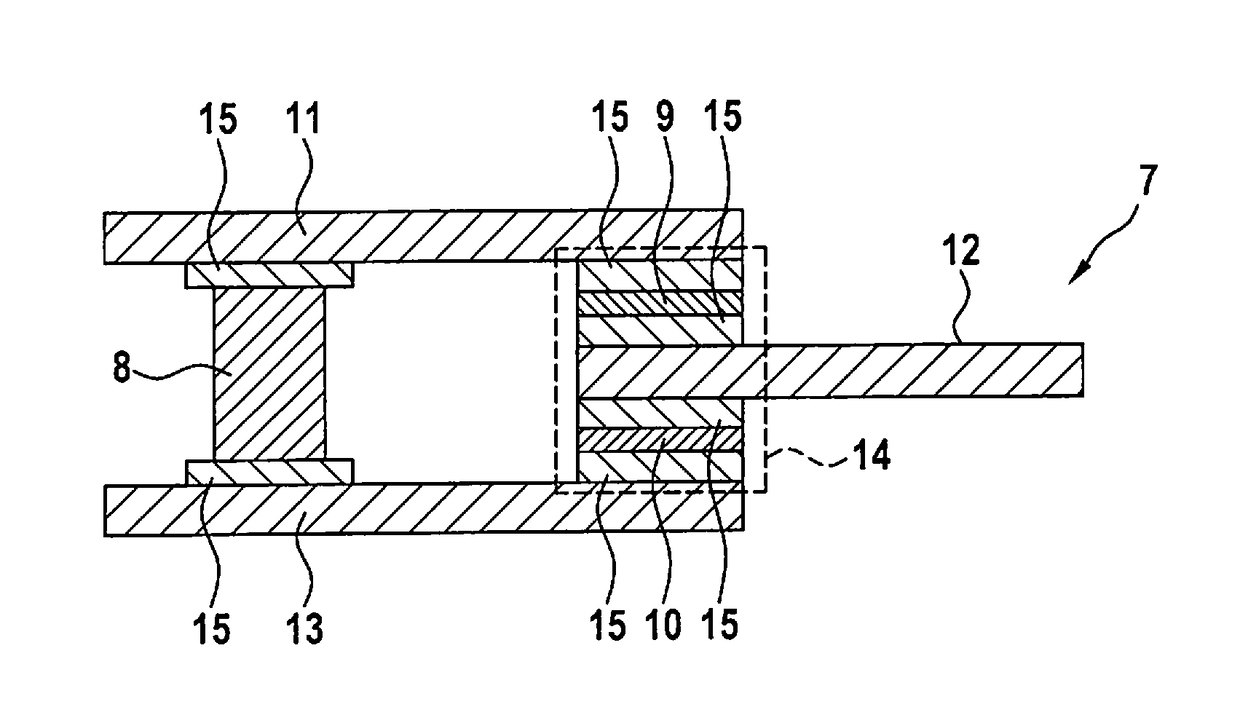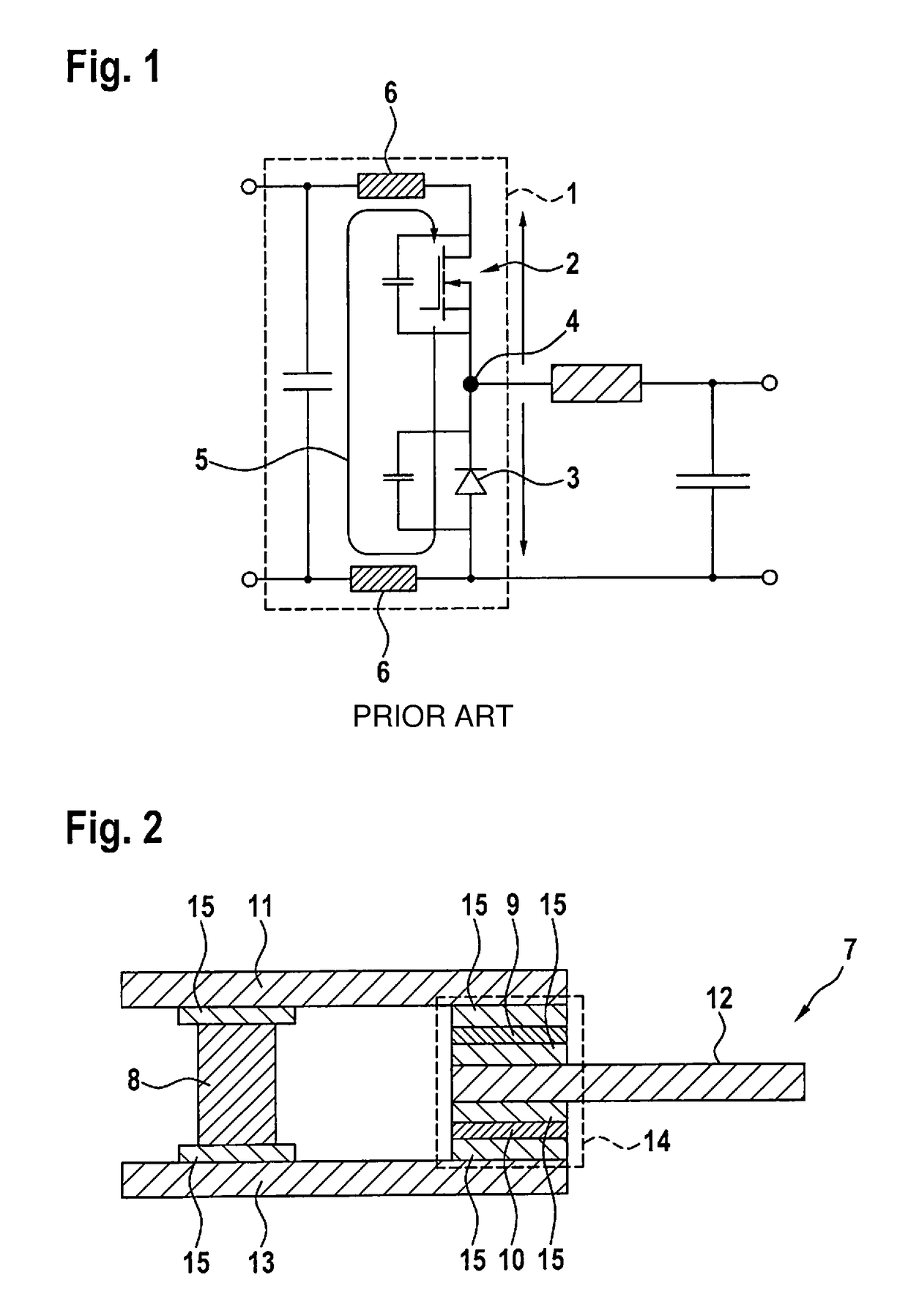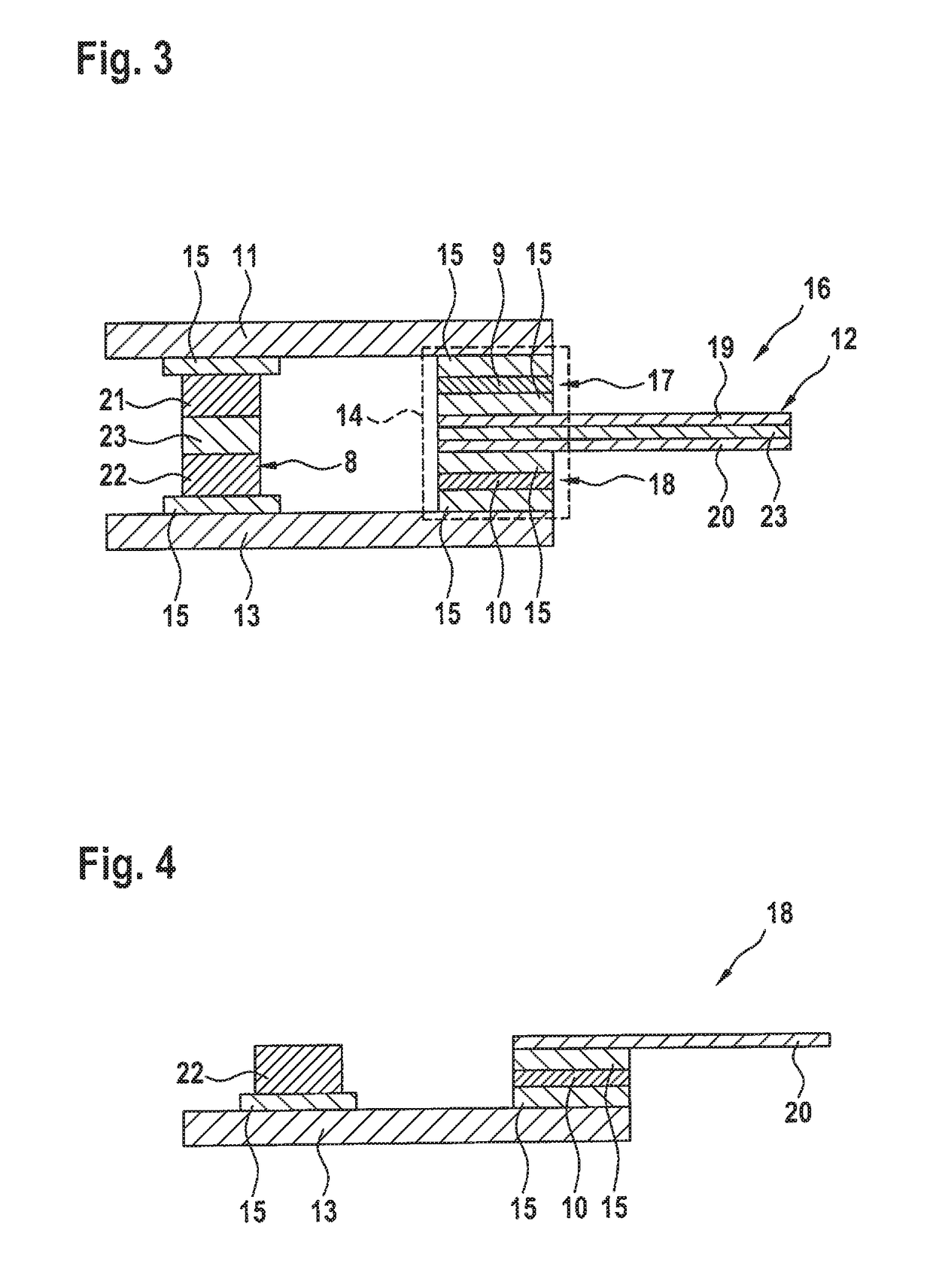Commutation cell
a commutation cell and cell technology, applied in the field of commutation cells, can solve the problems of high parasitic inductance of conventional commutation cells, and achieve the effect of preventing renewed melting and leaching and greater design freedom
- Summary
- Abstract
- Description
- Claims
- Application Information
AI Technical Summary
Benefits of technology
Problems solved by technology
Method used
Image
Examples
Embodiment Construction
[0022]FIG. 2 shows a schematic representation of an exemplary embodiment for a commutation cell 7 according to the present invention. Commutation cell 7 has an electrical capacitor 8, a controllable semiconductor switch 9, and a semiconductor 10, which is connected in series with controllable semiconductor switch 9. In addition, commutation cell 7 has three circuit substrates 11, 12 and 13 situated in parallel with one another, the controllable semiconductor switch 9 being switched in series with semiconductor 10 via a circuit substrate 12 that is partially situated between controllable semiconductor switch 9 and semiconductor 10. The two remaining circuit substrates 11 and 13 are connected to each other in an electrically conductive manner via a subassembly 14 made up of controllable semiconductor switch 9, semiconductor 10 and circuit substrate 12 partially situated between controllable semiconductor switch 9 and semiconductor 10. Electrical capacitor 8 is switched between the two...
PUM
 Login to View More
Login to View More Abstract
Description
Claims
Application Information
 Login to View More
Login to View More - R&D
- Intellectual Property
- Life Sciences
- Materials
- Tech Scout
- Unparalleled Data Quality
- Higher Quality Content
- 60% Fewer Hallucinations
Browse by: Latest US Patents, China's latest patents, Technical Efficacy Thesaurus, Application Domain, Technology Topic, Popular Technical Reports.
© 2025 PatSnap. All rights reserved.Legal|Privacy policy|Modern Slavery Act Transparency Statement|Sitemap|About US| Contact US: help@patsnap.com



